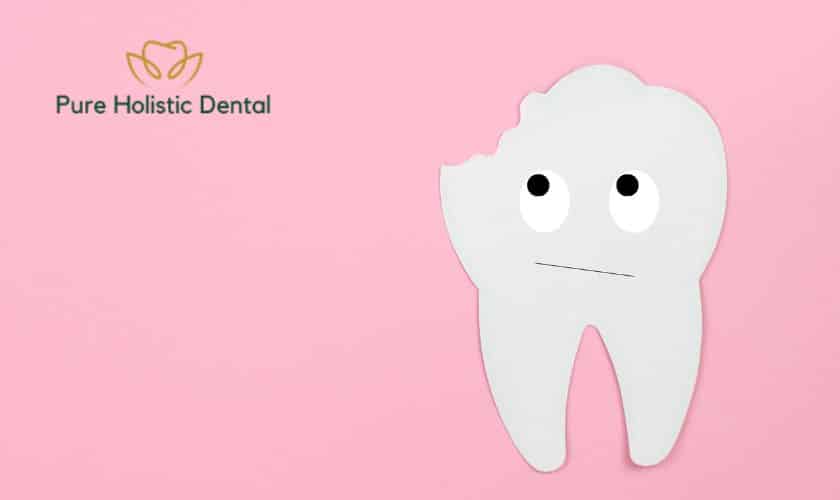Dental diseases are some of the most common and serious types of conditions in humans. Some dentists even believe that there may be more than 380 different human dental diseases, which include malocclusion (imbalance), tooth decay, and gum disease. There are several types of rare dental diseases you need to watch out for.
Dental health is an important aspect of overall well-being, and while many people are familiar with common dental conditions such as cavities and gum disease, there are some dental diseases that are considered to be rare. These rare dental diseases can affect the teeth, gums, and other parts of the oral cavity, and can have a significant impact on a person’s quality of life. Understanding the symptoms, causes, and treatments for these conditions is important for those who may be affected by them, as early diagnosis and intervention can improve outcomes and help to manage symptoms.
What Is A Rare Dental Disease?
A rare dental disease is a condition that affects the teeth, gums, and other parts of the oral cavity and is not commonly seen or diagnosed among the general population. These conditions can range from genetic disorders to infections and can cause a range of symptoms including pain, tooth loss, and difficulty eating. The term “rare” is used because these conditions are relatively infrequent in the general population.
3 Rare Dental Diseases
While dental diseases such as cavities and gum disease are quite common, there are some dental conditions that are considered to be rare. These rare dental diseases can range from genetic disorders that affect the development of the teeth, to infections that cause damage to the gums and surrounding tissues.
Some of them are:
Carious Lesions In Kids With Diabetes
One of the most common complications of diabetes is a form of tooth decay called dental caries. It occurs when sugar and acid from food and drink get into the soft inner layers of your teeth. This causes cavities and can lead to more serious problems including tooth loss. Tooth decay in children is usually caused by chewing on hard foods that cannot be chewed properly, such as sweets or ice, or by eating sugary drinks, such as soda. You might even need emergency dental treatment if left untreated for too long.
However, there are other factors that can contribute to tooth decay in kids with diabetes:
- Not brushing or flossing as often as needed
- Using a mouthwash that contains fluoride
- Drinking too much water
Recurrent Dental Abscesses & Osteomyelitis
Recurrent dental abscesses and osteomyelitis are common problems that can be caused by damage to the gums and teeth. These infections can lead to pain, swelling, and fever that may persist for weeks or months. It can be cured with the help of gum therapies that will help cure the damage.
Dental abscesses occur when bacteria (or their toxins) get trapped in an area of tissue that has been damaged by a toothache or other trauma. A dental abscess can form anywhere on your teeth: between the teeth, around a tooth root, or in between two teeth.
The symptoms of recurrent dental abscesses and osteomyelitis include redness, swelling, and tenderness along with fever. Sometimes there is no redness or swelling at all. However, if you have any of these symptoms then it is probably time to see your dentist!
Radiographic Findings Of Oral Manifestation Of Crohn’s Disease & Ulcerative Colitis
Oral manifestations of Crohn’s disease are typically characterized by ulcerations of the tongue, oral cavity, and oropharynx. In addition to ulcerations, patients may experience other symptoms such as pain, erythema, and erosion of the mucosa.
Ulcerative colitis is characterized by structured colonic mucosa with a high prevalence of hemorrhagic rectal bleeding. The severity of the disease varies from mild to severe and is associated with an increased risk for colorectal cancer.
Symptoms Of Dental Diseases
Rare dental diseases can present a range of symptoms that can impact oral health and quality of life. Below are some of the common symptoms associated with rare dental diseases, along with brief descriptions:
-
Tooth Sensitivity Or Pain
A person experiences a sharp, sudden pain or discomfort in one or more teeth when exposed to hot, cold, sweet, or sour stimuli. The pain can be brief and intense or linger for a short period after exposure. The underlying cause of tooth sensitivity can be due to exposed dentin, gum recession, tooth decay, fractured teeth, or worn dental restorations. It is important to see a dentist for proper evaluation and treatment if experiencing tooth sensitivity.
-
Tooth Discoloration
The color of one or more teeth can change from its natural shade to a darker tone. Discoloration can be due to a number of factors, including staining from foods and drinks, tobacco use, certain medications, aging, or a more serious underlying dental condition. In some cases, tooth discoloration can indicate a structural problem within the tooth, such as a cavity or internal bleeding. If you notice a change in the color of your teeth, it is important to see a dentist for a proper evaluation and treatment.
-
Difficulty Biting Or Chewing
Difficulty biting or chewing can be caused by a variety of factors, including tooth decay, gum disease, misaligned teeth, jaw joint problems, or a more serious underlying dental condition. In some cases, difficulty biting or chewing can also indicate a problem with the temporomandibular joint (TMJ), which connects the jawbone to the skull. If you experience difficulty biting or chewing, it is important to see a dentist for a proper evaluation and treatment.
-
Unusual Growths In The Mouth
Growths in the mouth can be indicative of a range of conditions, including oral cancer, benign tumors, cysts, or abscesses. In some cases, they may also be a result of an infection or injury to the oral tissues. Unusual growths in the mouth can be painful or painless and may change in size or appearance over time. If you notice any unusual growths in your mouth, it is important to see a dentist or oral surgeon for a proper evaluation and treatment.
-
Loose Or Missing Teeth
This can be caused by a variety of factors, including gum disease, tooth decay, injury, or advanced age. In some cases, loose or missing teeth may also be a result of more serious underlying dental conditions, such as jawbone loss or nerve damage. If you have loose or missing teeth, it is important to see a dentist for a proper evaluation and treatment to preserve your oral health and prevent further complications with the help of dental implants and other restorative services.
-
Recurring Mouth Sores Or Infections
Mouth sores or infections indicate a problem with the oral tissues or surrounding structures. These sores or infections can be caused by a variety of factors, including viral or bacterial infections, injury, or underlying health conditions. In some cases, they may also be a result of a more serious underlying dental condition, such as gum disease or oral cancer. If you experience recurring mouth sores or infections, it is important to see a dentist for a proper evaluation and treatment to prevent further complications and maintain your oral health.
-
Abnormal Jaw Growth Or Misalignment
Abnormal jaw growth or misalignment can be caused by a variety of factors, including genetics, injury, or underlying health conditions. In some cases, it may also be a result of a more serious underlying dental condition, such as temporomandibular joint disorder (TMJ) or sleep apnea. Abnormal jaw growth or misalignment can cause a range of symptoms, including difficulty biting or chewing, jaw pain, and headaches. If you experience any of these symptoms, it is important to see a dentist or oral surgeon for a proper evaluation and treatment.
It is important to note that these symptoms can also be indicative of other, more common dental conditions and should be evaluated by a dentist to determine the underlying cause.
Dental Diseases Aren’t As Rare As You Might Think
Dental disease is a serious matter for many people. But you might be surprised to know that it’s not as rare as you might think.
The number of possible rare diseases is huge, but here are five of the most common. In addition to the individual cases above, there are also others that are less well-known or documented. In some cases, the causative agents of these rare disorders may be unknown, but this doesn’t mean these disorders don’t exist. It simply means that more research needs to be done in these areas.
The Bottom Line
If you are afflicted with any of the rarer forms of dental disease, it is strongly recommended that you make an appointment with a dentist as soon as possible. Do not procrastinate, because your teeth can deteriorate considerably if left to their own devices.
In fact, dental diseases are one of the most common health problems in the world, affecting millions of people each year. If you’re concerned about your own oral health or the oral health of someone else in your life, there are steps you can take to prevent these diseases from progressing into serious conditions that require treatment or surgery.
FAQs
Q: Is it possible to have a rare dental disease?
A: The answer is yes, it’s possible to have a rare dental disease. Rare diseases are those that affect less than 1 in 10,000 people in any given year. There are over 50 million people with some form of rare disease, and about 1 million new cases are diagnosed each year.
Q: What causes a rare dental disease?
A: The cause of rare dentistry varies by condition. Some rare diseases are caused by genetic defects while others may be caused by an infection or other environmental factors.
Q: How common are these conditions?
A: Rare dental diseases occur in about 1 in 100,000 people each year worldwide and about 1 in 10,000 people in developed countries.


